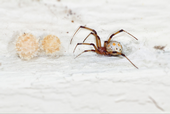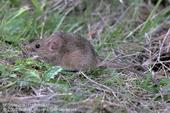- Author: Lauren Fordyce

Today is #GivingTuesday! – a global day of giving that harnesses the collective power of individuals to celebrate generosity.
If you've utilized the extensive UC IPM website and free publications, watched one of our webinars, read our newsletter, or shared our social media post, you've seen how #GivingTuesday donations help produce important information, tools, and trainings that enhance the quality of life, and the environmental and economic well-being of...

With many people thinking about turkey this time of year, we thought we would provide some interesting facts about wild turkeys for you to share during your holiday gatherings!
- Turkeys are not native to California but were introduced by European settlers. Most turkeys we eat are raised on farms but there are millions of turkeys that roam wild. The population of wild turkeys in California is estimated today to be roughly a quarter million birds!
- Turkeys are polygamous, meaning they will have more than one mate. They breed in...
- Author: Karey Windbiel-Rojas
- Posted by: Lauren Fordyce

The invasive pest spotlight focuses on emerging or potential invasive pests in California. In this issue, we cover the brown widow spider.
Brown Widow Spider Facts
The brown widow spider became established in Southern California in 2000 and appears to be displacing the black widow in some of its habitats, especially in urban areas. They build their webs in secluded areas around homes and in vegetation. Mature female brown widows are smaller than mature female western black widows. The normal brown widow spider coloration is a mottled mixture of tan, brown, and gray. It has a lengthwise stripe halfway up the back side of the abdomen with two isolated dots in front of it and diagonal stripes on...
- Author: Lauren Fordyce

You may not think about rodents such as rats, mice, or gophers until they become a pest around your home. Because rodents can be major pests in and around homes, gardens, landscapes, restaurants, and other buildings, each year pest control experts “celebrate” Rodent Awareness Week. Rodent Awareness Week (October 16-22) is an annual campaign created by the National Pest Management Association to educate the public about the potential harm associated with rats and mice. In addition to damaging structures and property, rodents can transmit diseases to humans and other animals. During the fall and winter months, rodents will seek food and shelter in...
- Author: Lynn S. Kimsey
- Posted by: Lauren Fordyce
![Most spiders, like this jumping spider, prefer to hide from people. [Credit: Dustin Hume, Unsplash]](https://ucanr.edu/blogs/UCIPMurbanpests/blogfiles/95486small.jpg)
Arachnophobia: Should You Be Afraid of Spiders?
Fear of spiders, arachnophobia, is a widespread problem in western societies. This fear is not only of spiders but can extend to all land arthropods with more than six legs—the arachnids. It can range from simply avoiding arachnids to panic attacks, high heart rates, and flight behavior. It's not clear if arachnophobia is a learned response or something instinctive. However, it is much commoner in western societies than elsewhere. In other parts of the world, spiders


